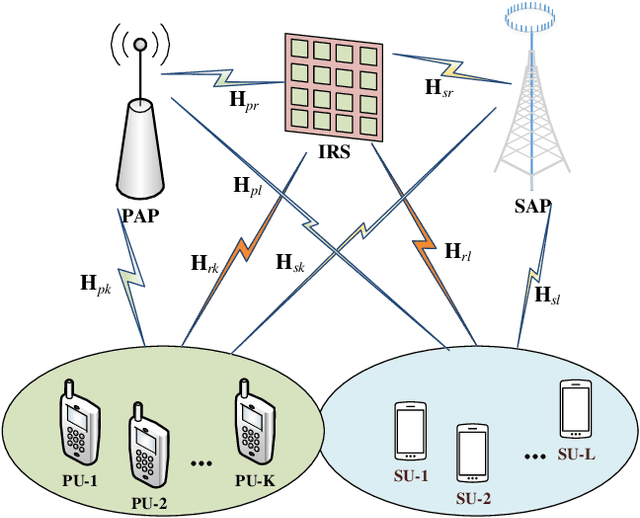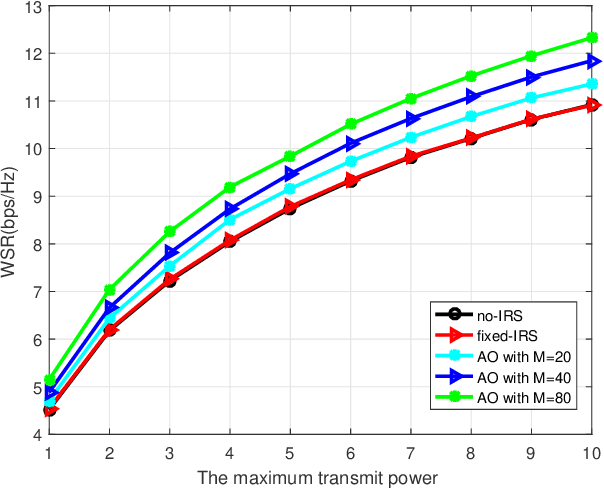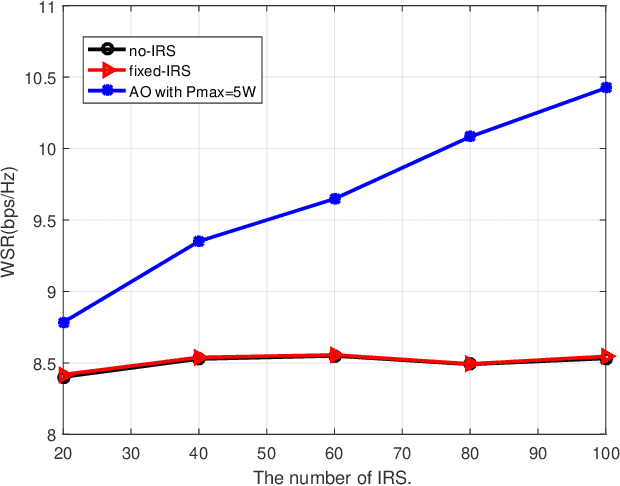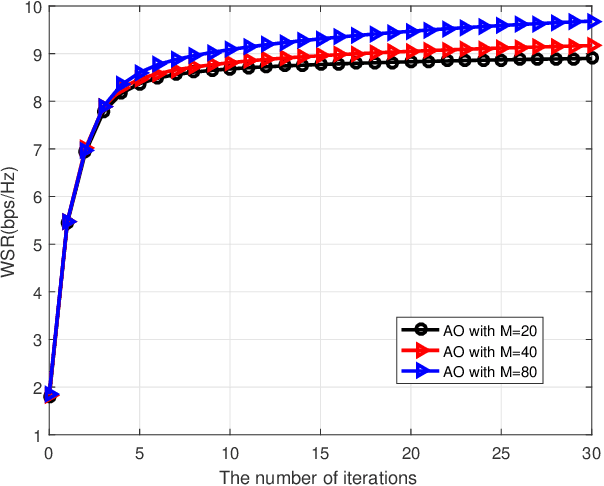Joint Transmit Precoding and Reflect Beamforming Design for IRS-Assisted MIMO Cognitive Radio Systems
Paper and Code
Feb 02, 2021



Cognitive radio (CR) is an effective solution to improve the spectral efficiency (SE) of wireless communications by allowing the secondary users (SUs) to share spectrum with primary users (PUs). Meanwhile, intelligent reflecting surface (IRS) has been recently proposed as a promising approach to enhance SE and energy efficiency (EE) of wireless communication systems through intelligently reconfiguring the channel environment. In this paper, we consider an IRS-assisted downlink CR system, in which a secondary access point (SAP) communicates with multiple SUs without affecting multiple PUs in the primary network and all nodes are equipped with multiple antennas. Our design objective is to maximize the achievable weighted sum rate (WSR) of SUs subject to the total transmit power constraint at the SAP and the interference constraints at PUs, by jointly optimizing the transmit precoding at the SAP and the reflecting coefficients at the IRS. To deal with the complex objective function, the problem are reformulated by employing the well-known weighted minimum mean-square error (WMMSE) method and an alternating optimization (AO)-based algorithm is proposed. Furthermore, a special scenario with only one PU is considered and an AO-based algorithm with lower complexity is proposed. Finally, some numerical simulations have been done to demonstrate that the proposed algorithm outperforms other benchmark schemes.
 Add to Chrome
Add to Chrome Add to Firefox
Add to Firefox Add to Edge
Add to Edge